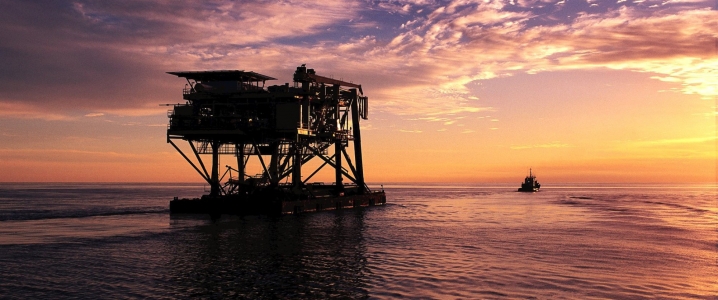A recent surge in final investment decisions (FIDs) on offshore oil and gas projects has set the scene for a healthy increase in offshore investments next year, thus preventing the shale industry from overtaking offshore for the first time, according to Rystad Energy’s latest analysis. This is due to a 50 percent year-on-year rise in the number of offshore projects that were sanctioned in 2017, with 62 FIDs, followed by similar growth this year with close to 100 offshore projects to be sanctioned. With that we will finally see offshore investment levels rise again in 2019, after four straight years of contraction.
“Our offshore activity index is pointing to annual growth rates of about 6 percent towards 2022, thereby returning to the high activity levels seen in 2014. Coupled with annual service price inflation of 5 percent, offshore oilfield service purchases are projected to grow by 11 percent per year towards 2022,” says Audun Martinsen, Head of Oilfield Research at Rystad Energy.
At the same time, the rise in offshore spending will coincide with a sequence of factors that will slow growth levels in the shale sector. “Logistical challenges, takeaway capacity bottlenecks and growing oversupply in the proppant and fracking market are all contributing to pull shale’s growth trajectory downward,” says Martinsen.
US well fracturing activity surpassed 50 wells per day in April 2018 but since then it has flattened out at just north of 50 wells per day. Although demand for frack sand in the US is expected to grow at 21 percent CAGR from 2018 to 2021, this is expected to be eclipsed by an even greater jump in supply, which is forecast to increase by 47 percent in 2018 and 27 percent in 2019. This oversupply will have a negative impact on prices.
“In-basin sand mines are being built out in the Permian, Eagle Ford, Mid-Con, Haynesville and DJ basins. Northern white sand prices have been declining rapidly, and we have observed Permian In-Basin Sand minegate prices falling below $40per ton,” Martinsen says.
Rystad Energy sees the net effect of these factors being that investment levels in shale will grow at a slower pace than previously expected and end up at about $120 billion in 2018. For 2019, about 22,000 shale wells are forecast to be drilled and completed in North America, which will likely translate to about 16 percent growth in investments in the sector. Related: Nuclear Power Could Be Key In Reaching Climate Goals
“Shale has thus lost some momentum at a time when investors have again found an appetite for the offshore domain, stimulated by a steep reduction in offshore costs and breakeven levels, which in turn have been driven by favorable unit prices,” Martinsen adds.
Rystad Energy data shows that global offshore capital investment fell by 16 percent in 2017 and is projected to fall by another 10 percent this year, reaching only about $160 billion, less than half the $350 billion invested at the peak in 2014. Offshore purchases are, however, projected to rise at an accelerating rate over the next three years.

(Click to enlarge)
More Top Reads From Oilprice.com:
- Why Oil Markets Can’t Escape OPEC, Russian Influence
- Ex GM Boss: Tesla ‘Headed For The Graveyard’
- Oil Companies Slash Debt To Pre-Crash Levels



















Shale, on the other hand, is a slowly developing disappointment that is below the threshold of recognition for most people. Cost accounting is not entirely straightforward and may even be dishonest. Accounting for shale disaster is mostly off-book for petroleum companies and on the books of citizens, as climate change effects, unhealthy air and water, and even roads over-burdened by heavy industry vehicles, accumulate.
Either way -- off-shore or in shale formations -- investors need to keep close tabs on cost, in the short term and the long. Citizens need to be mindful of net benefit for burning fossil fuel. Do we need to price-in petroleum cost that is not currently showing up when we purchase (fuel + pollution)?
My own observation is that while we have benefited immensely from burning fossil fuel, NET benefit is in a declining trajectory. Is our current market system really guiding consumers to make wise choices, especially for their children?
We're the ones actually guiding the wise ole invisible hand of the marketplace.